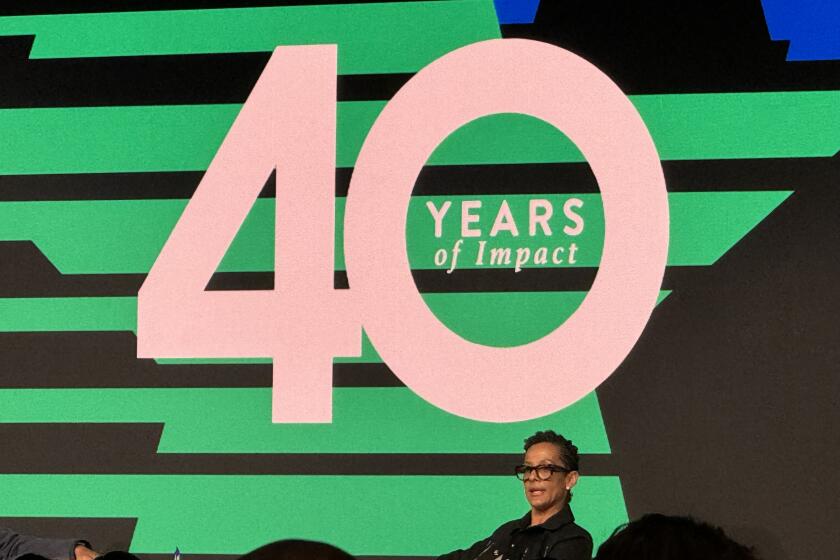Pac-10 plus Big 12 equals smoke but no fire
If you believe swirling reports, that 2014 Rose Bowl featuring Pacific 10 Conference champion Texas Tech versus Big Ten Conference champion Missouri on Channel 206 could really be something.
Advertisers, you know, drool over the television markets in Lubbock and Columbia.
If you believe the Rose Bowl game used to be a tradition unlike any other — except maybe the Masters — you missed the Rose Bowl joining the Bowl Championship Series in 1998 and then, one year, Washington State playing Oklahoma in Pasadena the same season USC and Iowa played in South Florida.
The sea change in college football began years ago, not this week, but the waters keep getting choppier.
“We’re a very interested spectator,” said Rose Bowl CEO Scott McKibben, whose game is obligated to host the Pac-10 and Big Ten champions no matter what.
Some swirling reports, it should be noted, circle closer to the truth than others. ESPN reported NCAA sanctions on USC would come down Friday, which was news to USC and the NCAA. Two outlets Thursday reported John Wooden had died, which was different than him being gravely ill.
Not every “scoop” out there is a dart looking for a board, though, so you had to take heed an Internet report from Orangebloods.com claiming the Pac-10 was poised to extend offers to six Big 12 schools.
Texas, Texas A&M, Oklahoma, Oklahoma State, Texas Tech and Colorado joining the Pac-10? Book me on the first Pullman from Pullman to Stillwater.
But is it true?
The answer is no, at least for now. Big 12 commissioner Dan Beebe said Friday he’s convinced his league will remain relatively intact amid reports the Big Ten is sending out feelers to Texas.
Wait, what happened to Texas to the Pac-10? And can Texas go anywhere, pigskin politically, without sidekick Texas A&M?
OK, deep breath time.
There isn’t going to be a blockbuster announcement from the Pac-10 meetings this weekend in San Francisco, and if there is we’ll be the first to say we had it right Friday but things changed.
What is actually happening is panic in college-land, as conferences try to anticipate the next move by the Big Ten, which is eventually — Commissioner Jim Delany says December at the earliest — expected to expand to as many as 16 schools.
That doesn’t mean the rest of the world can afford to sit still.
Everyone remembers 2003, when the Atlantic Coast Conference’s raiding of Miami, Virginia Tech and Boston College left the Big East in tatters.
Big 12 schools need a fallback plan if the league is going to lose Missouri and Nebraska to the Big Ten, so it’s no surprise Pac-10 rumors leaked out of Big 12 meetings.
The Pac-10 is in a position of strength, a vastly undervalued league with tons of upside. It hired Larry Scott as commissioner last year to overturn rocks in search for revenue.
The Pac-10 is not looking to raid the Big 12; it’s sort of the other way around. “Our phone is ringing off the hook,” Scott said Thursday.
Schools and conferences that could be left standing after Big Ten musical chairs see the Pac 10 as a possible landing spot. So the Pac-10 is looking at all options — why would it not?
It could stay at 10, increase by two, or yes, merge with the Big 12.
It could have a championship game, or not.
If college someday soon evolves into four 16-team super conferences, the Pac-10 is going to be one of them.
This is all about money, of course. The revolution began in the 1980s when the Supreme Court ruled the NCAA couldn’t control college football rights, which turned power over to the conferences, which led to free enterprise and, eventually, the BCS.
The recent trip-wire was the Big Ten Network, suddenly, becoming very profitable. It can now offer members more than $20 million per year in revenue, more than double what Pac-10 schools receive.
The Southeastern Conference just secured broadcast deals totaling $3 billion over the next 15 years. Pac-10 presidents hired Larry Scott and said: “Show us the money.”
Scott recently hired Creative Artists Agency to bolster the conference’s profile as it ponders the possibilities.
Scott is looking to leverage college football’s popularity and profitability next year when he starts negotiating the Pac-10’s new television deals, which expire after 2012 basketball season.
“We’re dealing from a position of strength,” Scott said.
One option would be to offer a Pac-10/Big 12 combo conference that features three of the biggest brands in college football: USC, Oklahoma, and Texas.
But this is all speculation. “We have been proactive in looking at a lot of scenarios,” Scott said. “Everything is on the table.”
Scott does not expect an earthquake announcement out of San Francisco and is sticking to a statement he made back in April that a decision on expansion would be made by the end of the year.
UC Berkeley Chancellor Robert Birgeneau reportedly told a Cal Alumni Club in New England this week the Pac-10 could be on the verge of revolutionary transformation.
Scott said those comments were a bit premature.
“We don’t feel any rush to have to make a decision,” Scott said. “…There have been no decisions, no offers … but we’re looking at possibilities that could be revolutionary.”
More to Read
Get our high school sports newsletter
Prep Rally is devoted to the SoCal high school sports experience, bringing you scores, stories and a behind-the-scenes look at what makes prep sports so popular.
You may occasionally receive promotional content from the Los Angeles Times.







